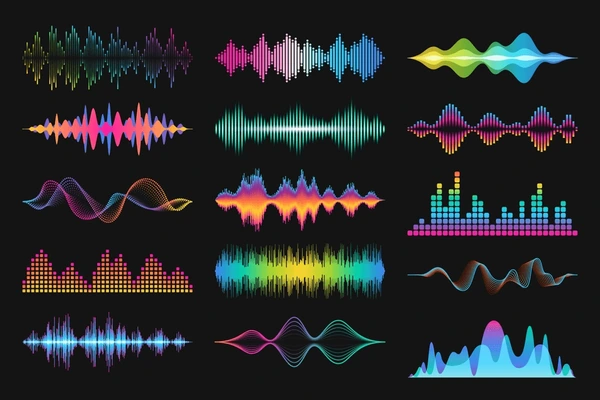The allure of sensory stimulation in digital experiences

The digital age has transformed how users engage with online content, and mystery box platforms have not remained untouched. Among the myriad ways these platforms captivate audiences, sound and visual effects play a crucial yet often underappreciated role. These sensory elements aren’t just about aesthetics or flair; they are carefully curated tools that amplify excitement, intensify suspense, and ultimately make the user experience more immersive and memorable. When designed effectively, these effects become integral to the narrative arc of the unboxing journey, enhancing emotional impact and reinforcing user engagement.
Sound effects: orchestrating emotion and anticipation
Sound is a powerful emotional driver. On mystery box platforms, the use of audio is deliberately engineered to manipulate anticipation and amplify reward. The subtle click of a virtual spinner, the ascending tones as a box opens, or the celebratory jingle that accompanies a rare win, each audio cue has been selected or composed to evoke a psychological response. It is the difference between a flat digital action and one that feels meaningful.
Anticipatory sounds mimic the audio cues found in casino slot machines or video games, industries that have long studied the science of user engagement. These sounds work to build a tension curve, gradually increasing excitement as the user approaches the reveal. This emotional build-up taps into the brain’s reward system, particularly the release of dopamine, which is often associated with both uncertainty and reward. That final audio flourish upon receiving a high-value item provides a sonic climax that triggers satisfaction and a desire to repeat the process.
Moreover, sound effects serve to create consistency across a user’s journey. From box selection to the final reveal, audio branding, short musical stingers, atmospheric soundscapes, or branded chimes, ensures a cohesive identity that can help distinguish one mystery box platform from another. This sonic identity becomes part of the platform’s signature, fostering brand recognition and emotional familiarity.
Visual effects: more than just digital decoration
Visually, mystery box platforms lean heavily into design elements that mimic real-world tactile experiences. Animated opening sequences, spinning wheels, glimmering light effects, and even particle explosions on rare drops all serve to turn a simple digital transaction into an event. These visual effects heighten drama, signal rarity, and direct user focus to key elements on the screen.
One key visual technique is the use of « slow reveal » animations. Instead of immediately showing the contents of a box, many platforms implement a reveal delay, perhaps a brief flicker through possible items, followed by a pause, and then a final spotlight on the actual prize. This visual suspense not only increases user engagement but also replicates the thrill of scratching off a lottery ticket or unwrapping a present. It manipulates timing and visibility to maximize emotional payoff.
Color psychology also plays a significant role in visual effects. Warm colors like gold, red, and purple are often associated with premium or rare items, while cool colors like blue or grey may signify standard or less exciting prizes. Flashing effects, glowing borders, and animated flames can be used to dramatize ultra-rare wins, further reinforcing perceived value. These effects are not random; they are the result of user experience research and behavioral analysis that shows how users respond to visual stimuli.
Creating immersive feedback loops
Together, sound and visual effects create what is known as a feedback loop, a system where user actions are immediately reinforced through sensory responses. When a user clicks « open, » they are rewarded not only with a prize but also with a cascade of sensory validation: a satisfying sound, a burst of color, perhaps a quick animation of coins raining down or a treasure chest popping open. These elements work in unison to make the user feel successful and validated.
This feedback loop is essential to sustaining user engagement. Without these sensory reinforcements, the experience could feel static, unrewarding, or disconnected. The feedback loop also helps regulate pacing, guiding users through the platform’s rhythm: select, unbox, react, repeat. A well-designed loop keeps the experience engaging and dynamic, while a poorly executed one can lead to fatigue or loss of interest.
The gamification layer: using effects to mimic gameplay
Gamification has become a central strategy for mystery box platforms, and sound and visuals are core components of this gamified experience. By borrowing elements from mobile gaming, such as progress bars, victory animations, combo streaks, or « rare drop » announcements, platforms can simulate a game-like environment where the user feels like a player rather than a buyer.
Sound effects like level-up chimes or combo chains create the illusion of progress, even when no tangible reward is obtained. Visually, this might be reinforced through explosion animations or badge unlocks that appear on the screen after certain actions. These sensory tools gamify the unboxing process, encouraging users to chase after achievements and status symbols, thereby deepening their engagement.
Importantly, these effects are not just decorative, they’re performative. They tell a story. They frame the act of unboxing as a quest, a risk, a challenge, and a potential triumph. Without these elements, the act of buying a mystery box might feel transactional and unmemorable. With them, it feels like a game of chance, a mini adventure, or a spectacle.
Emotional engineering: tapping into nostalgia and fantasy
Many sound and visual design choices tap into deeper emotional associations. Retro sound effects, pixel art animations, or arcade-style visuals may evoke childhood memories of gaming or collecting, while fantasy-inspired effects, glowing swords, treasure chests, sparkling potions, ignite the imagination. These nostalgic and fantasy triggers help elevate the experience beyond simple commerce.
Mystery box platforms often incorporate themes for this reason. A “space” mystery box might include ambient cosmic sounds, zero-gravity animations, and starbursts, while a “pirate” themed box might feature cannon booms and map-scroll visuals. These thematic layers engage the user’s imagination, making each box feel like a new chapter or story.
By aligning sensory effects with familiar cultural tropes, platforms enhance emotional resonance. Users aren’t just opening a box; they’re going on an adventure, playing a role, or reliving a memory. This storytelling dimension is amplified by the clever use of audio-visual elements that reinforce the fantasy.
Personalization through effects
Advanced platforms are increasingly using data-driven personalization to adapt sound and visual effects to individual user profiles. For example, a high-spending user might see more elaborate animations when they win, or users with a history of favoring certain themes might be shown effects that reflect their preferences. Personalized soundtracks, visual themes, and even win animations can make the user feel seen and valued.
This approach not only enhances user satisfaction but also deepens brand loyalty. The more tailored the experience, the more unique it feels, increasing the likelihood of continued engagement. Personalization also reduces sensory fatigue by varying effects based on user behavior, preventing the experience from becoming repetitive or dull.
Psychological pacing and sensory tension
A crucial aspect of mystery box design is the modulation of sensory tension. This involves balancing high-stimulation moments (e.g., winning a rare item) with quieter, more subdued effects during less exciting outcomes. If every box used the same level of intensity, the user would become desensitized. By varying sound and visuals, reserving the most dramatic effects for truly rare events, platforms maintain emotional contrast and preserve the thrill.
For example, a common win might produce a soft click and minimal animation, while a jackpot prize might trigger a screen-wide explosion of light and sound. This differential pacing mirrors the structure of a roller coaster, with ups and downs that create a compelling narrative arc. Users remain emotionally engaged because they know that something extraordinary might happen at any moment, and the sensory effects prepare them for that payoff.
Cross-platform consistency: adapting effects for mobile and desktop
Sound and visual effects must also be adapted across devices. What works on a desktop with large speakers and a widescreen may not translate to a mobile experience with smaller visuals and quieter audio. Effective mystery box platforms design flexible sensory assets that scale based on the device in use.
Mobile platforms may favor haptic feedback, vibrations that accompany unboxings, combined with sharper, shorter sound effects and simpler visuals. On desktop, platforms can afford to be more cinematic, with wider animations, surround-like audio, and layered visuals. This adaptability ensures that the sensory impact is optimized for each user environment, maximizing the effect of each unboxing session.
The dark side of sensory manipulation
While these effects are often used to enhance fun and immersion, they can also be used manipulatively. Just like in gambling platforms, overly stimulating effects can encourage compulsive behavior. Loud victory music, flashing lights, and rapid-fire animations can overwhelm users’ decision-making, pushing them to keep unboxing even when it’s not in their best interest.
Some platforms may even intentionally blur the line between near-miss and win, using sensory effects to make losing feel more exciting than it should. A box that nearly lands on a rare prize might still trigger a dramatic sound or zoom effect, misleading users into thinking they were “so close,” encouraging further purchases. Ethical platforms must tread carefully in how they use these tools, ensuring they enhance rather than exploit user engagement.
The future of sensory immersion in mystery boxes
Looking ahead, the role of sound and visual effects in mystery boxes is likely to become even more immersive. With the rise of AR (augmented reality) and VR (virtual reality), we can expect mystery box platforms to adopt spatial audio, 3D animations, and even haptic suits that simulate the feeling of touching or holding an item. Unboxing might soon become a full-body experience, far removed from the static clicks of today.
AI will also play a role in dynamically generating soundtracks or animations based on user behavior, time of day, or even mood. For instance, if a user has had a string of losses, the system might subtly shift the background music to something more optimistic to keep morale high. Conversely, big wins could trigger real-time social sharing animations or community-driven sound reactions.
As sensory technology continues to evolve, so too will the emotional and psychological landscape of mystery box platforms. Sound and visual effects are not just accessories, they are pillars of the experience, capable of shaping user perception, guiding behavior, and creating unforgettable digital moments.
